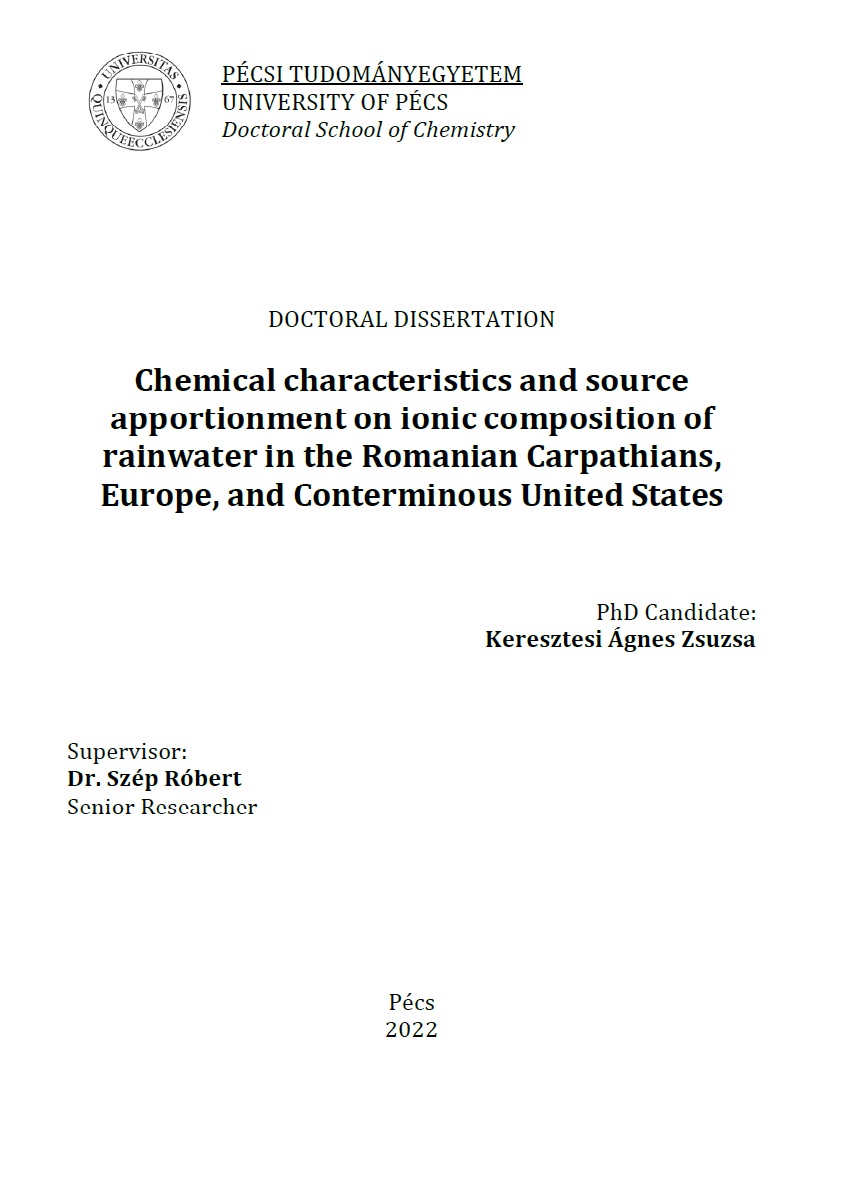Chemical characteristics and source apportionment on ionic composition of rainwater in the Romanian Carpathians, Europe, and Conterminous United States
Abstract
The thesis is a complex study of precipitation chemistry using methods and models of
environmental chemistry and geochemistry. Its elaboration started from the validation
of some mathematical models, and by analyzing the dispersion behavior of some chemical
species in atmospheric precipitation samples collected in closed intramountain basins.
These closed basins are characterized by the specific microclimate conditions, which
helps to develop the models mentioned above. In the intramountain depressions studied
in the Eastern and Southwestern Carpathians, the influence of the Carpathian arc can be
observed on the continental and/or oceanic air masses, and on the specific local
characteristics, respectively. By analyzing the chemical composition of precipitation
corroborated with the air masses circulation, significant modifications can be observed
due to climate change that is present both at local level (by the appearance of local
anticyclonic systems) and at continental level, by changing the trajectory of continental
air masses. These changes are visible by the long-range transport of some chemical
species present in different regions. The concentration of sea salts, respectively the
significant specific correlation between chloride and sodium or its loss in certain regions
are indicators of the changes occurred in the air masses. The Foehn effect of the Dinaric
Alps on the chemical composition of atmospheric precipitation has been highlighted. By
extrapolating the results obtained in intramountain depressions to the European level,
corroborating them with the climate policies assumed in the last two decades by the
European Union member states indicates a homogenization and an accentuated decrease
of acid ions, in comparison to non-EU countries, where higher levels of acidic pollutants
were observed. The calculation techniques used at European level were extrapolated to
the contiguous United States, which in comparison to the European continent, has a much
greater climate variability, and the applied environmental policies are not unitary, hence
there is a clear trend of less visible decrease of different pollutants compared to EU
countries.

